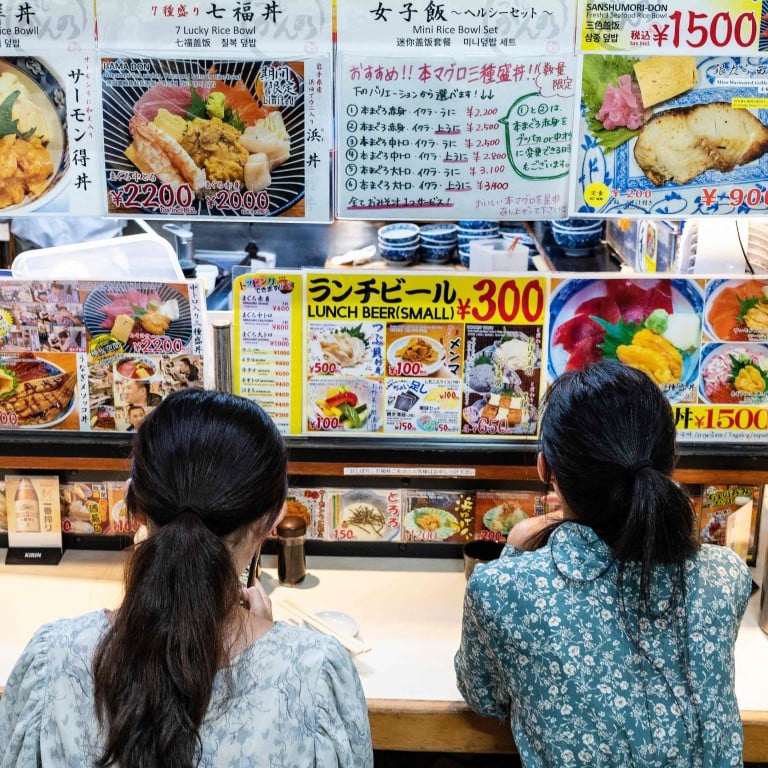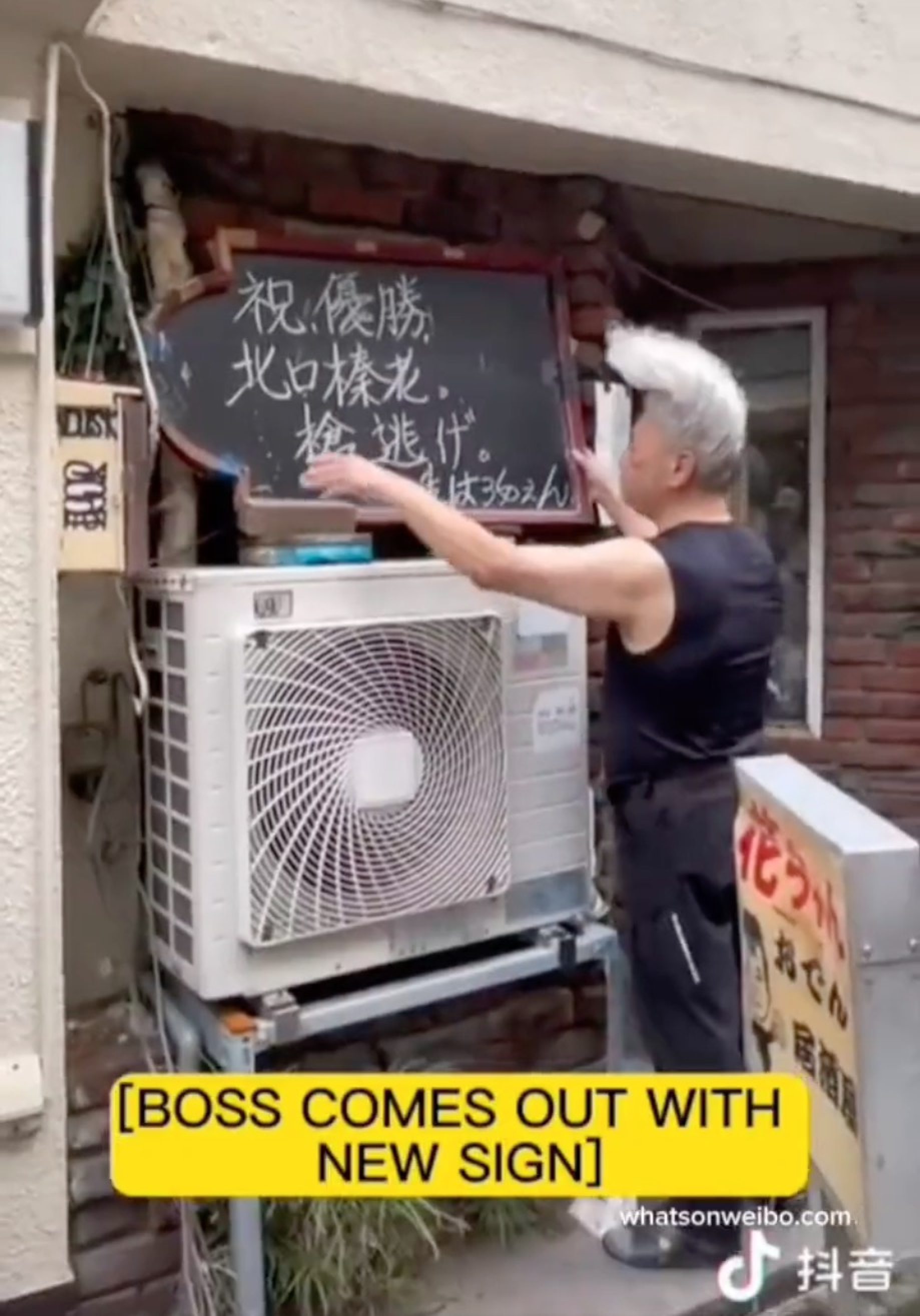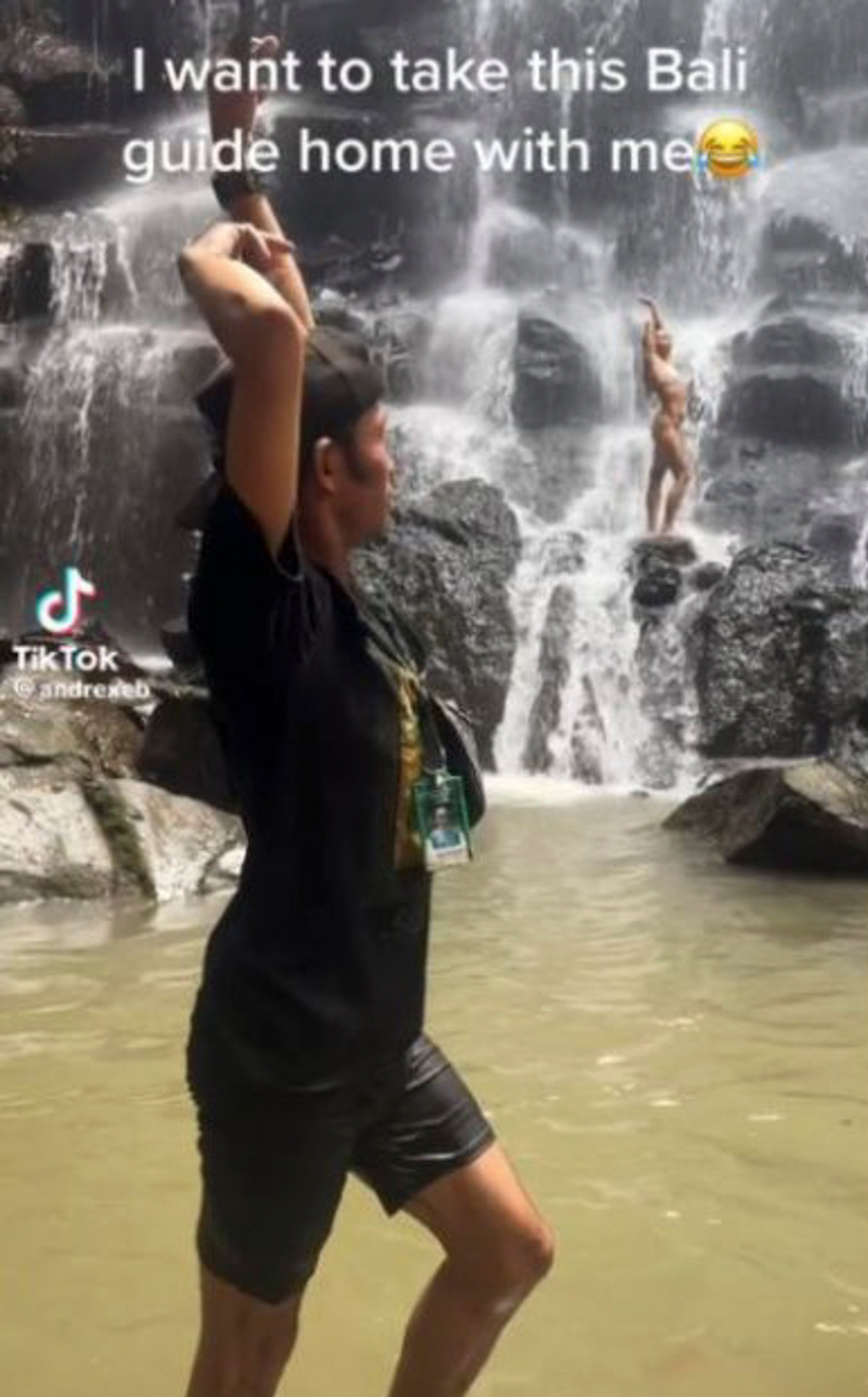
Are Chinese tourists in Japan toeing the party line over eating seafood after Fukushima waste water release? Apparently not
- Chinese tourists in Japan appear unfazed about eating seafood following the release of waste water from the wrecked Fukushima nuclear plant, restaurants report
- Some Japanese businesses, however, are receiving so many angry calls from China they have difficulty conducting normal operations, according to another report
What does tritium taste like, we wonder? A bit like chicken?
Following the 2011 disaster at the Fukushima Daiichi nuclear power plant, the Tokyo Electric Power Company (Tepco) has been using water to cool the radioactive melted-down reactor cores.
Now, about 1.3 million tonnes of contaminated water is stored in tanks that are susceptible to future earthquakes.

A couple of weeks ago, Tepco embarked on a 30-year programme of discharging the contaminated water into the ocean. Before release, it is treated to reduce the levels of most radioactive elements to below Japan’s regulatory limits for environmental discharge, but tritium cannot be removed in this process.
A type of hydrogen and a relatively weak source of beta radiation, tritium – which can be found in a variety of household tools as well as novelty flashing keychains (advertising boast: “Tritium Keychains glows [sic] continuously for over 25 years without requiring charging from sunlight or artificial light”) – can increase the risk of cancer if ingested in huge quantities.
Several thousand keychains would do it, we’re guessing, and certainly much more than Japanese Prime Minister Fumio Kishida and three cabinet ministers consumed recently, when they tucked into sashimi fished off the coast of Fukushima in an attempt to dispel safety concerns.
Holiday in Fukushima? From dark tourism to ‘hope tourism’ 12 years on
There’s nothing to worry about, say the Japanese authorities, because the radioactivity of the water being released meets the safety standards for drinking water set by the World Health Organization, and the International Atomic Energy Agency has concluded that the discharge “would have a negligible radiological impact on people and the environment”.
In China, some concerned citizens – probably those who still have a large supply of toilet paper from Covid times – have been buying salt in bulk, worried about the contamination of sea salt and in the belief that iodised salt can help protect against radiation poisoning.
Some tourists expressed more concern about the water but were conflicted, since they had travelled all the way to Japan wanting to enjoy its delicacies
Tourists, though, are built of sterner stuff.
“Chinese and Hong Kong tourists visiting Japan largely seem unfazed about eating sushi and seafood in Japan […] with many local seafood restaurants seeing little impact so far,” reports The Japan Times, in an article in which many of those quoted refuse to give their full names (which would seem suspicious if we weren’t living in such tense times).
The food, of course, is a major draw for many tourists in Japan, and the newspaper quotes an undeterred 55-year-old from Beijing as saying, “[One thing] I’m excited to have is seafood, like sushi.”
A pair of Zhejiang students in their early 20s, Wang Liwei and Yu Zijie, who were visiting Tokyo together, said they were “slightly worried” after hearing about the release but would not be deterred from eating seafood in Japan.
Japan to provide US$141 million in relief to exporters hit by China seafood ban
“Some tourists expressed more concern about the water but were conflicted, since they had travelled all the way to Japan wanting to enjoy its delicacies,” reports The Japan Times.
“Rabee’a and Winnie, travellers in their early 20s from Hong Kong, said that the news would not stop them from eating seafood […] but they would eat ‘less than normal’.”
On the other hand, a couple in their 40s, while enjoying an evening at Sensoji Temple, in Tokyo’s Asakusa district, told the paper they were shunning seafood altogether. They had booked an omakase (a chef’s special at a sushi restaurant), one of them, Qi Zhang, said, “But we just cancelled it.”
And even though Satoshi Ichikawa, the manager at Shou, a sushi restaurant in Tokyo’s Toyosu fish market district, said he hadn’t noticed a dip in custom because of the water release, that may have been because he hadn’t previously noticed an increase in Chinese customers post-Covid.
“There haven’t been that many customers from mainland China this year,” said Ichikawa. “I thought there might be an increase with the ban on group tours having been lifted [on August 10], but I feel like not that many Chinese tourists have come.”
What to stream this weekend: Netflix’s The Days relives Fukushima disaster
They may not have been calling in on Japan physically, but some Chinese have been calling in telephonically, to voice their displeasure.
Calls from China began flooding Japanese businesses from August 24, when Tepco started the water release.
“Japanese businesses and groups, ranging from a concert hall in Tokyo to an aquarium in northern Iwate, reported that they had started receiving so many calls from Chinese speakers that they had difficulty conducting normal operations,” according to an AFP report.
Perhaps having had a call or two of his own was the Shinjuku restaurant owner with a magnificent quiff who was taken to task by a Chinese blogger who demanded – while filming himself for a social media video that went viral – that the restaurateur take down a “discriminatory” sign that read: “To Chinese (customers): all of the food in our restaurant comes from Fukushima prefecture. Draught beer 350 yen.”


So, more choppy seas for China-Japan relations, but would Destinations Known tuck into sushi or sashimi plucked from the waters of Fukushima if we were to suddenly find ourselves at a restaurant in Toyosu?
Honestly, we would have no qualms. Just as we don’t worry much about all the pesticides and fertilisers injected into the soil and the antibiotics and hormones fed to livestock by farmers – and indeed about all the tritium flushed into the sea from other nuclear power plants around the world.
Although, perhaps we should.
Bali tourist guides will coach you on Instagram poses
What a time to be alive! We now have guides who not only take us to places and tell us about them, but also instruct us on how to pose for our obligatory social media shot.
People like Wayan Denis, who, according to Coconuts Bali, has become a hit by showing visitors how they should pose for their Instagram moment beneath the Indonesian island’s Kanto Lampo Waterfall, in Gianyar: “Throw back your head”; “stick out your chest”; “hoist her up by the waist”: that sort of thing.
“A lot of people stood in line to be [photographed] by him – including me – and all of us watched him so intensely and were amazed by his dedication,” Coconuts quotes one man, who waited in what sounds like a very long queue of people desperate to see – or be seen at – the waterfall.

When the news site caught up with him, Wayan Denis (born I Wayan Sukanada) said that he learned which Instagram poses worked best by examining lots of poses – on Instagram. He also said that, “In total there are 10 other [pose-coaching guides, at Kanto Lampo Waterfall] – all of them are my friends.”
Which is just as well, since one Instagram user’s trip to the tourist hotspot would have been a complete washout without a pose coach: “I am one of those people who was told what to do while on camera because I did not know about poses,” wrote @lensi_djaga online. “The results are good so coming here is not a waste of time.”

